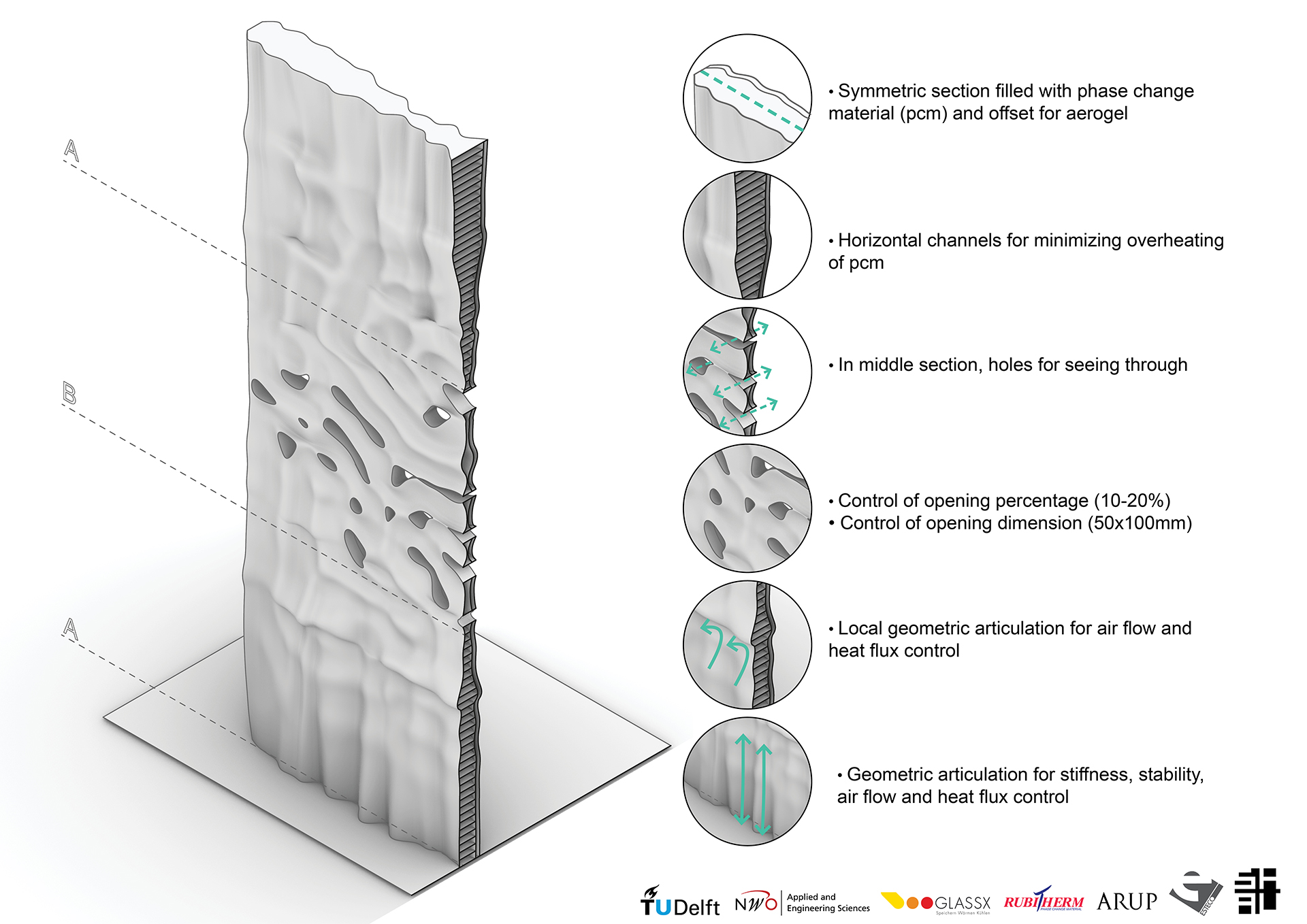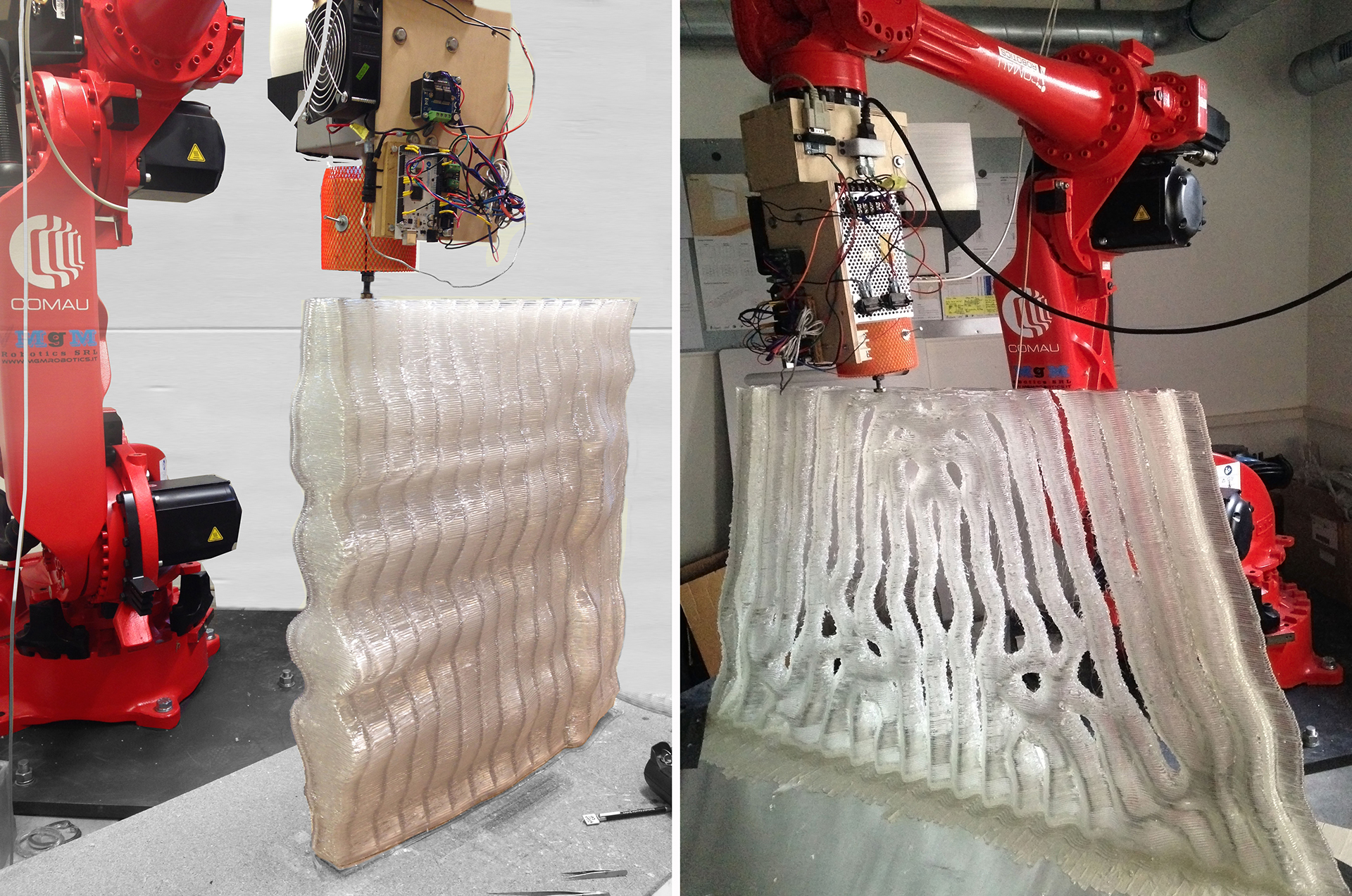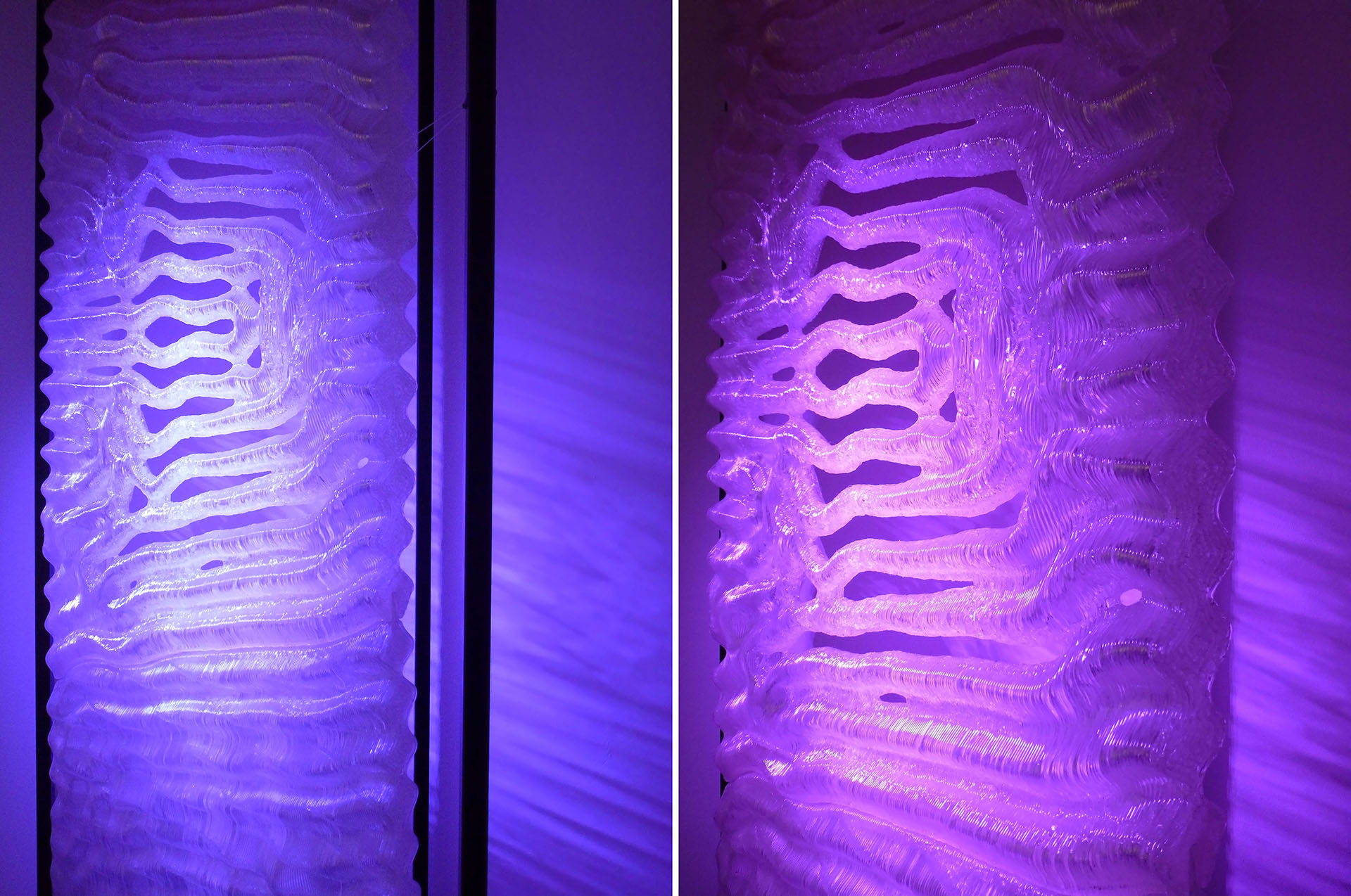Double Face 1.0 and 2.0
A lightweight, adjustable, optimized Trombe wall based on phase change materials and additive manufacturing
The Double Face 2.0 project is part of the research program Research through Design with project number 14574, which is financed by the Netherlands Organization for Scientific Research (NWO) and Taskforce for Applied Research SIA.
Double Face 2.0, as a follow up from Double Face 1.0, is a novel Trombe wall (Solar wall) joining a strong identity and high technical performances. A Trombe wall is a passive system generally made out of thick and heavy stone-like material placed behind a layer of glass and air. By harnessing the energy from the sun, a Trombe wall can reduce the energy demand of buildings for heating. By making the wall adjustable, i.e. rotatable in our case, it can also capture heat from internal sources thereby acting as a cooling device. By adding a thin insulation layer, the heat is better trapped inside the material. Thus, in winter during the day the system captures and temporarily stores heat from the sun; in the evening and at night it releases this heat into a room (heating mode). In summer during the day, it captures and stores heat from internal sources; and at night it releases this heat into the atmosphere (cooling mode).
In response to the need of energy saving, such novel high-performance building elements can be shape-opsimised for passive climate control and can also increase users’ engagement. Given a design concept, computational approaches help optimising and customising high-performance building elements for any environment and any type of user. Double Face 2.0 was developed by research through design involving designing, 3D modelling, robotic FDM printing, prototyping, experimenting, simulating and simulation-based optimising. A prototype of a lightweight, adjustable, translucent Trombe wall was developed, using an insulator (translucent aerogel) and a heat storage material (salt-hydrate phase change material (PCM)) encapsulated in optimised and customisable shapes. Both the external surface was optimized in order to improve the heat transfer for the different modes (solar radiation, IR radiation and convection), and the internal structure was segmented for overcoming overheating of the PCM and for having an equal light transmittance.
Except for being optimized for light transmittance and heat transfer, the beauty of the materials also lies in the crystal formation of the PCM, the flake-like appearance of the aerogel granules and the pearl-like gloss of the printed PETG.
Facts
| Funder: | 4 TU Centre of Excellence for the Built Environment Technology Foundation STW |
| Programme: | Lighthouse project Research through Design Program |
| Overall budget: | Phase 1: € 50.000 (4TU) Phase 2: € 268.421 (STW) |
| Grant amount: | Phase 1: Total: € 50.000 Contribution to TU Delft: € 35.000 Phase 2: Total: € 249.521 Contribution to TU Delft: € 249.521 |
| Grant number: | 14574 |
| Role TU Delft: | Lead/Project partner |
| Project duration: | Phase 1: June 2014 - February 2015 Phase 2: May 2016 - September 2018 |
| TU Delft researchers: | Dr.ir. Martin Tenpierik Dr. Michela Turrin MSc Arch Ir. Yvonne Wattez Tudor Cosmatu MArch Stavroula Tsafou MSc MAS |
Project partners
Shau Architecture and Urbanism, GlassX AG, Rubitherm GmbH, Esteco SpA, Arup Amsterdam


